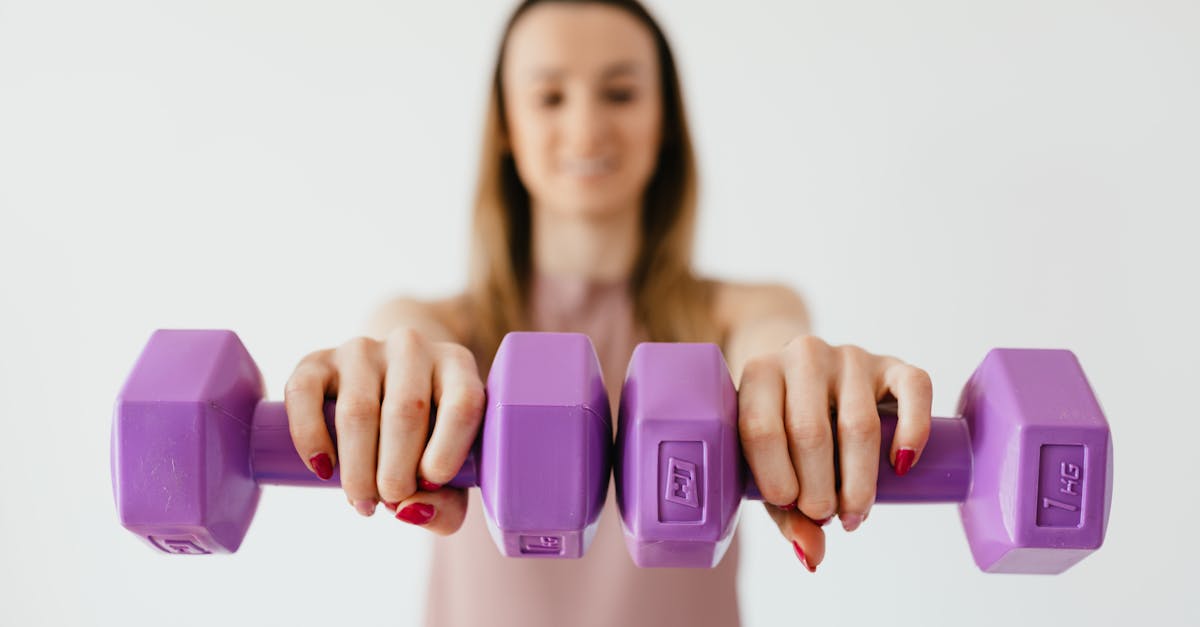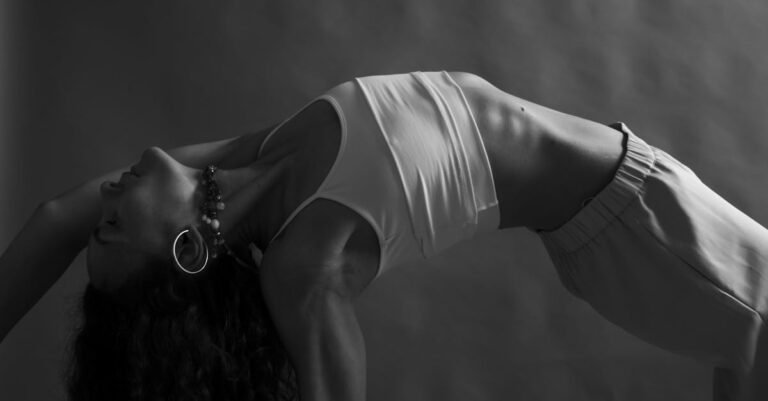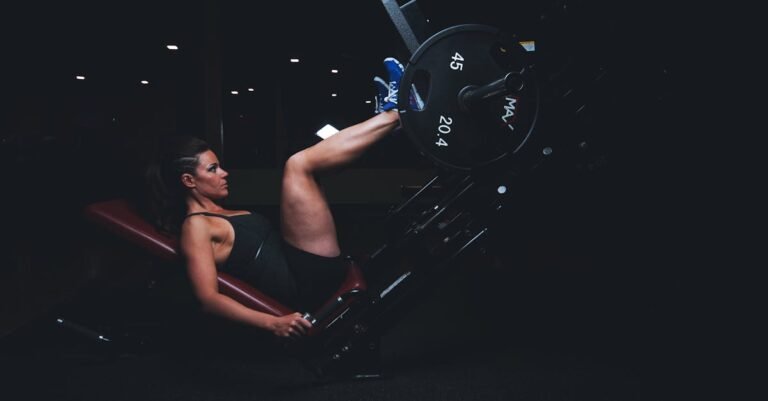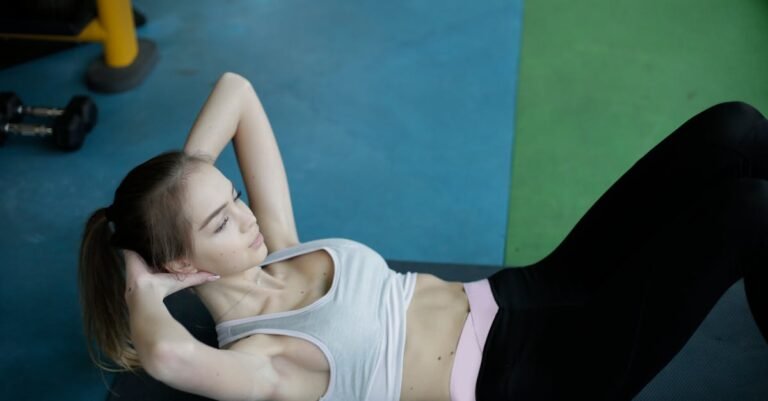Table of Contents
-
Functional Fitness Explained Simply
-
What Exactly *Is* Functional Fitness?
-
Why Should You Care About Functional Fitness? (The Benefits)
-
Key Principles of Functional Fitness Training
-
Common Functional Fitness Exercises (Examples You Can Try!)
-
Functional Fitness vs. Traditional Weightlifting: What’s the Difference?
-
Getting Started with Functional Fitness
-
Is Functional Fitness Right for Everyone?
-
Conclusion: Move Better, Live Better
-
Frequently Asked Questions (FAQs)
Functional Fitness Explained Simply
Ever feel like you hit the gym regularly, maybe lift some weights, run on the treadmill, but still find yourself out of breath carrying groceries up the stairs? Or maybe you tweak your back doing something simple like picking up a laundry basket? It’s frustrating, right? You’re putting in the effort, but it doesn’t always seem to translate directly into… well, life. That’s where functional fitness comes strolling in, ready to change the game.
Forget just building beach muscles (though that can be a happy side effect!). Functional fitness is all about training your body to handle real world activities safely and efficiently. Think of it as upgrading your body’s operating system so you can navigate your daily life with more ease, strength, and resilience. Ready to ditch the disconnect between gym time and real life? Let’s dive in and figure out what this functional fitness buzz is all about.
What Exactly *Is* Functional Fitness?
Okay, let’s break it down. The term “functional” basically means having a specific purpose or task. So, functional fitness is exercise designed with a purpose – the purpose of making you better at performing everyday movements and activities. It’s practical, it’s purposeful, and honestly, it just makes sense.
Beyond Bicep Curls: Thinking About Real Life
Think about your average day. You bend down to tie your shoes, you lift bags out of the car, you push a heavy door open, you reach for something on a high shelf, you twist to grab your seatbelt, maybe you even chase after a runaway toddler (or pet!). These aren’t isolated movements targeting just one muscle group, are they? Nope. They involve multiple joints and muscle groups working together in coordinated patterns.
Traditional weightlifting often focuses on isolating specific muscles – think bicep curls, leg extensions, triceps pushdowns. While these have their place, functional fitness takes a broader view. It asks: how does the body actually move outside the gym? It’s less about sculpting individual muscles in isolation and more about teaching your entire body – muscles, joints, nervous system – to work together as a cohesive unit, just like it needs to when you’re lifting that awkward box or sprinting to catch the bus.
The Core Idea: Training for Movement, Not Just Muscles
The heart of functional fitness lies in training movement patterns rather than just individual muscles. Our bodies are designed to perform fundamental movements: pushing, pulling, squatting, lunging, hinging (like bending over), twisting, and carrying. Functional exercises are typically built around these core patterns.
Imagine your body as an orchestra. Traditional isolation exercises might train the violin section beautifully, or get the trumpets sounding powerful. But functional fitness trains the entire orchestra to play together in perfect harmony. It strengthens the connections and coordination between different muscle groups, improves stability, enhances balance, and ultimately makes the whole system perform better, whether you’re on stage (so to speak) performing a complex athletic feat or just navigating the symphony of daily life.
Why Should You Care About Functional Fitness? (The Benefits)
Alright, so it trains you for real life movements. But what’s in it for you specifically? Why swap out some of your old routine for this functional approach? Oh, let me count the ways! The benefits are pretty compelling and often make a tangible difference in your day to day experience.
Making Everyday Tasks Easier (Like, Way Easier!)
This is perhaps the most immediate and noticeable benefit. When you train the movements you actually use, those movements become less strenuous. Simple as that.
Lifting Groceries Without Groaning
Remember hauling those heavy bags? Functional training strengthens your legs, core, and back in a coordinated way, mimicking the lifting and carrying motion. Squats, deadlifts (even light ones or variations), and farmer’s walks directly translate to making grocery hauling (or lifting suitcases, furniture, you name it) feel significantly less like a Herculean task. You’ll learn to lift with your legs and core, not just your strained back muscles.
Playing with Kids (or Grandkids) Without Getting Winded
Keeping up with energetic little ones requires stamina, agility, and the ability to get up and down off the floor easily. Functional fitness improves your cardiovascular health, strengthens your legs for squatting down to their level, enhances your core stability for quick movements, and builds overall endurance. You’ll be the fun parent or grandparent, not the one watching from the sidelines gasping for air!
Reducing Your Risk of Injury
This is a huge one. Many injuries happen not from lifting massive weights, but from performing everyday movements incorrectly or with a body unprepared for the load or range of motion. Think throwing out your back picking up a pen, or twisting your knee stepping off a curb awkwardly.
Functional fitness strengthens the muscles that stabilize your joints, improves your balance and coordination, and teaches your body proper movement mechanics. By training your body to move efficiently and absorb force correctly across multiple joints, you build resilience against the stresses and strains of daily life and sport. It’s like reinforcing the chassis of your car – making it less likely to buckle under pressure.
Boosting Athletic Performance
Whether you’re a weekend warrior, a casual jogger, or a competitive athlete, functional fitness can give you an edge. Most sports involve complex, multi joint movements – running, jumping, throwing, swinging, twisting. Functional training directly improves your ability to perform these actions with more power, speed, agility, and efficiency.
By strengthening the core, improving coordination between the upper and lower body, and developing power through integrated movements, you become a more capable and less injury prone athlete. It helps translate gym strength into real world sporting prowess.
Improving Balance and Coordination
As we move through life, especially as we age, maintaining good balance and coordination becomes crucial for preventing falls and staying independent. Many functional exercises inherently challenge your balance – think lunges, single leg movements, or exercises performed on unstable surfaces (used cautiously!).
This type of training strengthens the small stabilizer muscles around your joints and improves the communication between your brain and your body (your neuromuscular system). The result? You feel more stable on your feet, react quicker to sudden shifts in balance, and move with greater confidence and grace.
Enhancing Quality of Life, Especially as We Age
Ultimately, all these benefits roll up into one major advantage: a better quality of life. Being able to move freely, without pain, and with confidence allows you to participate more fully in the activities you enjoy. Whether it’s gardening, traveling, playing sports, or simply keeping up with daily chores, functional fitness helps you maintain your independence and vitality.
This becomes increasingly important as we get older. Functional fitness can help counteract age related muscle loss (sarcopenia) and declines in mobility and balance, allowing you to stay active, engaged, and self sufficient for longer. It’s an investment in your future self.
Key Principles of Functional Fitness Training
So, what makes an exercise “functional”? It’s not just about random movements. There are some core principles that guide functional training programs.
Multi Joint Movements are King
As we’ve touched upon, functional exercises typically involve movement across multiple joints simultaneously. Think about a squat: it involves your hips, knees, and ankles all working together. Compare that to a leg extension machine, which primarily isolates the knee joint. Or a push up, engaging shoulders, elbows, and wrists, versus a bicep curl focusing mainly on the elbow.
Why is this important? Because that’s how we move in real life! Rarely do we use just one joint in isolation. Training multiple joints together teaches muscle groups to cooperate, improving coordination and mimicking the demands of everyday activities and sports much more effectively.
Engaging the Core (It’s More Than Abs!)
When we talk about the “core” in functional fitness, we mean much more than just the six pack muscles (rectus abdominis). Your core includes all the muscles in your torso – front, back, and sides – including your abs, obliques, lower back muscles, glutes, and pelvic floor. Think of it as a muscular corset that stabilizes your spine and pelvis.
Nearly every functional movement requires a stable core to transfer force efficiently between your upper and lower body and to protect your spine. Exercises like squats, lunges, push ups, rows, and carries heavily engage the core musculature, building stability from the inside out. A strong, functional core is the foundation for almost all movement.
Mimicking Real World Actions
The closer an exercise resembles a movement you perform outside the gym, the more functional it generally is. Lifting something heavy off the floor? That looks a lot like a deadlift. Pushing a stalled car? That’s similar to a sled push or a heavy push up. Carrying heavy shopping bags? Hello, farmer’s walk! Climbing stairs? Step ups and lunges are your friends.
By practicing these movement patterns in a controlled environment with appropriate resistance, you’re essentially rehearsing for life. You’re strengthening the exact neuromuscular pathways needed for those tasks, making them feel easier and safer when you encounter them in the wild.
Common Functional Fitness Exercises (Examples You Can Try!)
Ready to see what this looks like in practice? Here are a few cornerstone functional exercises. Remember, proper form is crucial, so start light and consider getting guidance if you’re unsure.
The Mighty Squat (and its Variations)
Possibly the king of functional exercises. We squat countless times a day – getting in and out of chairs, picking things up, etc. A proper squat engages your quads, hamstrings, glutes, core, and back.
Variations: Bodyweight squats, goblet squats (holding a weight at your chest), barbell back squats, front squats, overhead squats.
Lunges: Stepping Up Your Game
Lunges mimic walking, running, and climbing stairs, but with added challenge. They work each leg independently, improving balance, stability, and strength in your quads, glutes, and hamstrings.
Variations: Forward lunges, reverse lunges, walking lunges, lateral lunges, curtsy lunges.
Push Ups: Classic and Effective
A fundamental pushing movement. Push ups work your chest, shoulders, triceps, and core. They mimic pushing things away from you, whether it’s a heavy door or getting up off the floor.
Variations: Wall push ups, incline push ups (hands elevated), standard push ups, decline push ups (feet elevated), plyometric push ups.
Pull Ups/Rows: Building Back Strength
Essential pulling movements that balance out all the pushing we do. These strengthen your back (lats, rhomboids, traps), biceps, and core. Think pulling open a heavy door, starting a lawnmower, or climbing.
Variations: Pull ups (various grips), chin ups, assisted pull ups (bands or machine), inverted rows, dumbbell rows, cable rows.
Carries: The Farmer’s Walk and Beyond
Simply picking up heavy things and walking with them. Sounds basic, right? But carries are phenomenal for building grip strength, core stability, shoulder stability, and overall work capacity. It directly translates to carrying groceries, suitcases, or children.
Variations: Farmer’s walk (heavy weight in each hand), suitcase carry (heavy weight in one hand), overhead carry, racked carry (weights at shoulder height).
Functional Fitness vs. Traditional Weightlifting: What’s the Difference?
Okay, let’s clarify something. Functional fitness isn’t necessarily *anti* traditional weightlifting. Many traditional lifts (like squats and deadlifts) are highly functional! The difference often lies in the overall approach and emphasis.
Isolation vs. Integration
As mentioned, traditional bodybuilding often prioritizes isolating specific muscles to maximize their size (hypertrophy). Think machines like the leg extension, hamstring curl, or pec deck fly. Functional fitness prioritizes integrated movements that use multiple muscle groups and joints together, focusing on movement patterns and coordination.
It’s like comparing a specialist musician focusing only on their instrument versus a conductor ensuring the whole orchestra works together seamlessly.
Machines vs. Free Weights/Bodyweight
Traditional gyms are often filled with machines that guide your movement along a fixed path. While these can be useful for beginners or specific rehab scenarios, functional fitness typically favors free weights (dumbbells, kettlebells, barbells), resistance bands, medicine balls, and your own bodyweight. Why?
Because free weights and bodyweight exercises require you to stabilize the load and control the movement path yourself. This recruits more stabilizer muscles, engages your core more heavily, and better mimics the unpredictable nature of real world movements where objects don’t move along perfect, predetermined tracks. Machines often remove the need for stabilization, which is a key component of functional strength.
Getting Started with Functional Fitness
Feeling inspired? Awesome! Getting started doesn’t have to be complicated. You don’t need a fancy gym membership right away.
Starting Simple: Bodyweight Basics
You already have the most functional piece of equipment: your own body! Master the basics first. Focus on perfecting the form of bodyweight squats, lunges, push ups (even on your knees or against a wall), planks, and maybe some simple rows using a sturdy table edge (be careful!). Build a solid foundation before adding external load.
Finding a Good Coach or Class
While you can start on your own, getting guidance from a qualified coach or joining a functional fitness class can be invaluable. A good coach can assess your movement patterns, teach you proper form to prevent injury, tailor exercises to your current fitness level, and help you progress safely and effectively. Look for trainers certified in functional movement systems or gyms that emphasize this style of training.
Listening to Your Body
This is crucial for any fitness program, but especially when learning new movements. Functional training can challenge your body in new ways. Pay attention to signals like pain (sharp, shooting pain is a stop sign!), excessive soreness, or fatigue. Don’t push through pain. Rest and recovery are just as important as the workouts themselves. Start slowly, focus on quality over quantity, and gradually increase the intensity or complexity as you get stronger and more comfortable.
Is Functional Fitness Right for Everyone?
In a word: pretty much, yes! Because functional fitness is based on the fundamental movements humans are designed to perform, it can be adapted for almost any age, fitness level, or goal.
Whether you’re a senior citizen wanting to maintain independence, a desk worker trying to counteract the effects of sitting, a new parent needing energy, an athlete striving for peak performance, or someone recovering from an injury (with proper guidance), the principles of functional fitness can be applied.
The key is scalability. Exercises can be modified to be easier or harder. A squat can be a simple sit to stand from a chair, a bodyweight squat, a goblet squat, or a heavy barbell squat. The *pattern* is functional; the intensity is adjusted to the individual. Of course, if you have specific health conditions or injuries, it’s always wise to consult with your doctor or a physical therapist before starting any new exercise program.
Conclusion: Move Better, Live Better
So, there you have it – functional fitness demystified! It’s not some fleeting fitness fad; it’s a smart, practical approach to exercise that bridges the gap between the gym and your everyday life. By focusing on training movement patterns, engaging your core, and mimicking real world actions, you build strength, stability, and resilience that translates directly into making daily tasks easier, reducing injury risk, and enhancing your overall quality of life.
It’s about building a body that serves you well, allowing you to move with confidence and capability through all of life’s adventures, big and small. Ready to start training for life? Give functional fitness a try – your body will thank you!
Frequently Asked Questions (FAQs)
FAQ 1: Do I need special equipment for functional fitness?
Not necessarily, especially when you’re starting out! Many highly effective functional exercises use just your bodyweight (squats, lunges, push ups, planks). As you progress, common functional fitness tools include dumbbells, kettlebells, resistance bands, medicine balls, pull up bars, and suspension trainers (like TRX), but you can build a great foundation without any fancy gear.
FAQ 2: Can functional fitness help me lose weight?
Absolutely! Functional workouts often involve compound movements that engage multiple large muscle groups simultaneously. This burns a significant amount of calories both during and after the workout (thanks to the ‘afterburn’ effect or EPOC). Combined with a healthy diet, functional fitness can be a very effective tool for weight loss and improving body composition.
FAQ 3: How often should I do functional fitness workouts?
This depends on your fitness level, goals, and the intensity of your workouts. A good starting point for many people is 2 3 times per week on non consecutive days to allow for recovery. As you get fitter, you might increase the frequency or duration. Listen to your body and prioritize rest.
FAQ 4: Is functional fitness the same as CrossFit?
No, although there’s overlap. CrossFit incorporates many functional fitness exercises (like squats, deadlifts, pull ups, Olympic lifts) into its high intensity, constantly varied workouts. However, functional fitness is a broader training philosophy focused on improving real world movement, while CrossFit is a specific branded fitness program with its own methodology, competitive elements, and community structure. You can do functional fitness without doing CrossFit.
FAQ 5: I have a previous injury, can I still do functional fitness?
Often, yes, and it can even be beneficial for rehabilitation and preventing re injury when done correctly. However, it’s crucial to work with a qualified professional – like a physical therapist or a certified trainer experienced in rehabilitation – who can assess your specific condition, modify exercises appropriately, and guide you safely. Don’t just jump into a generic program; get personalized advice.










